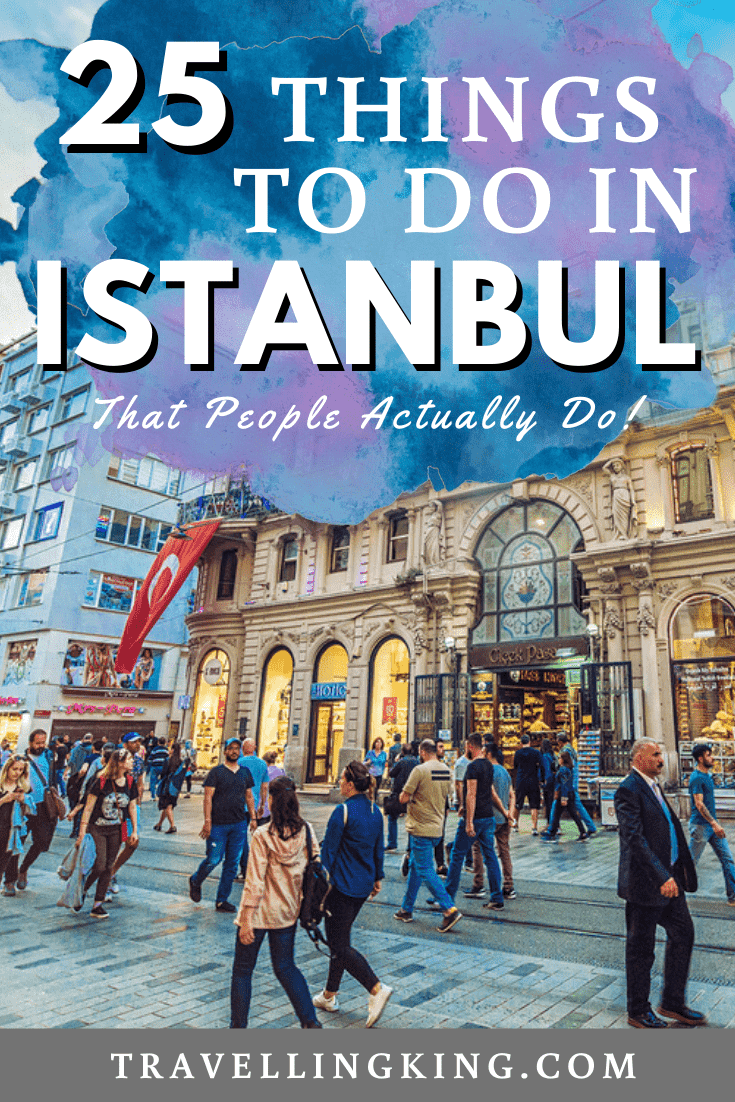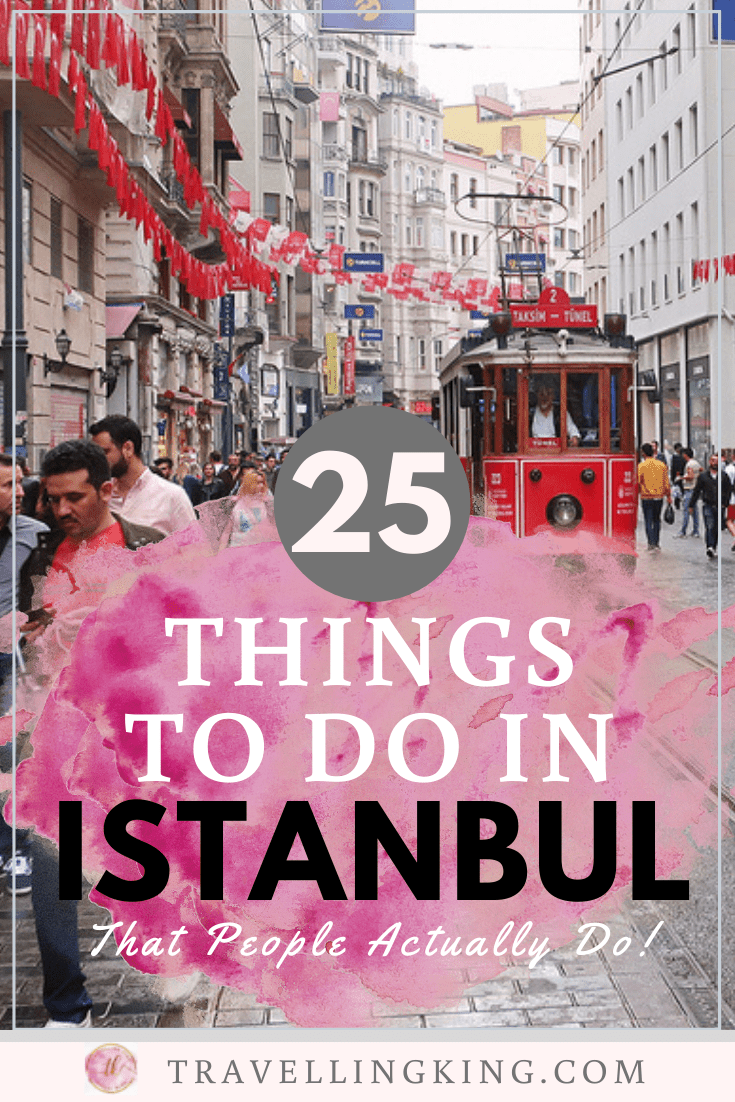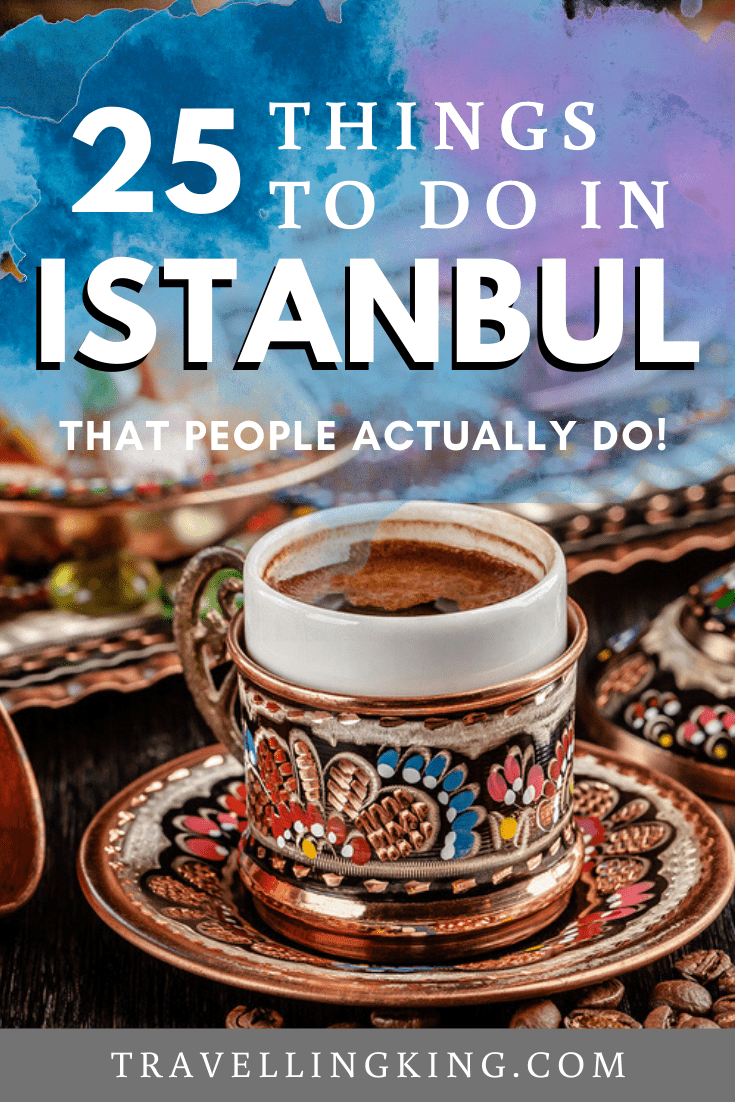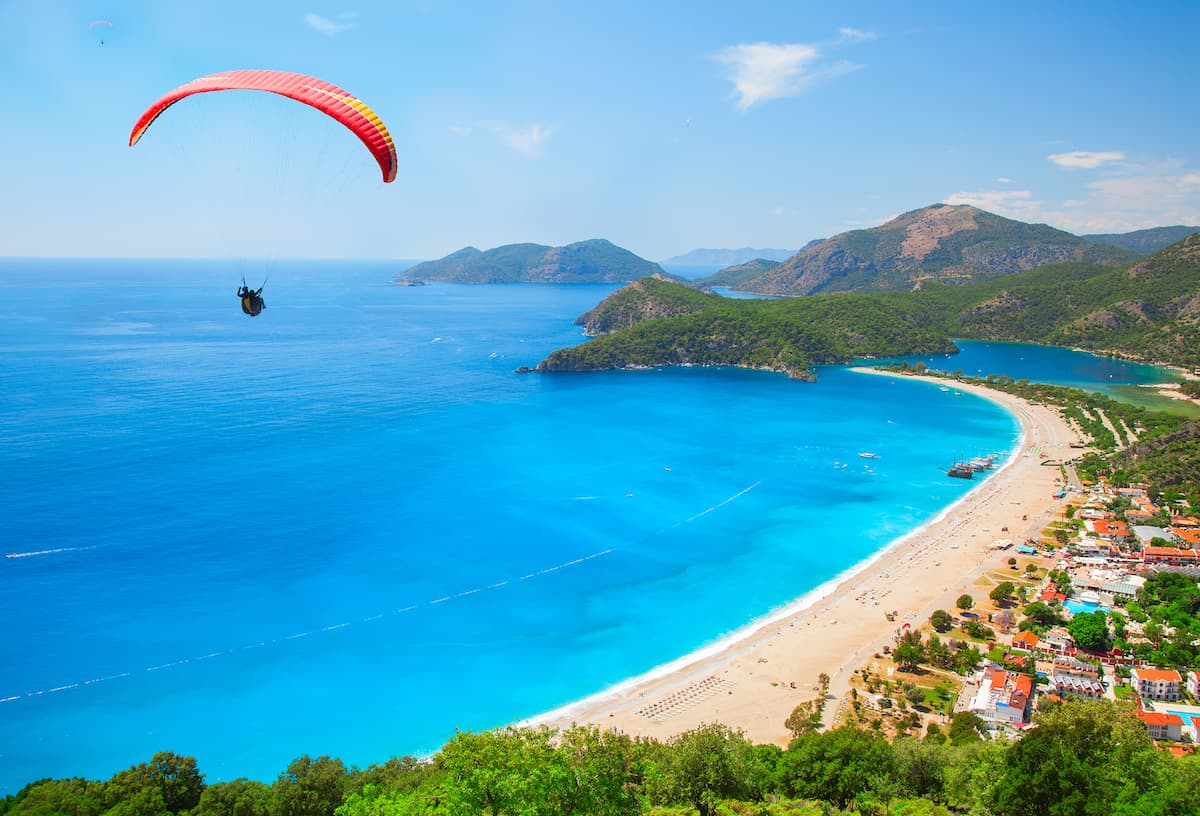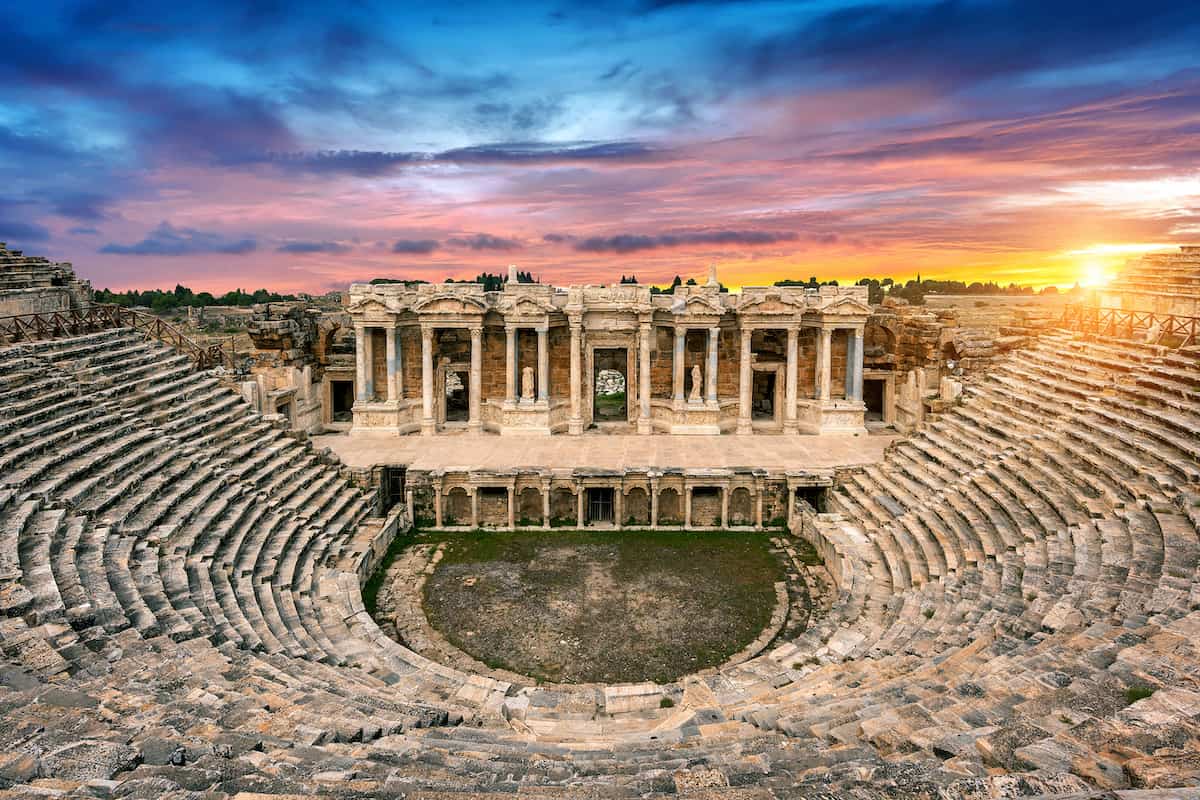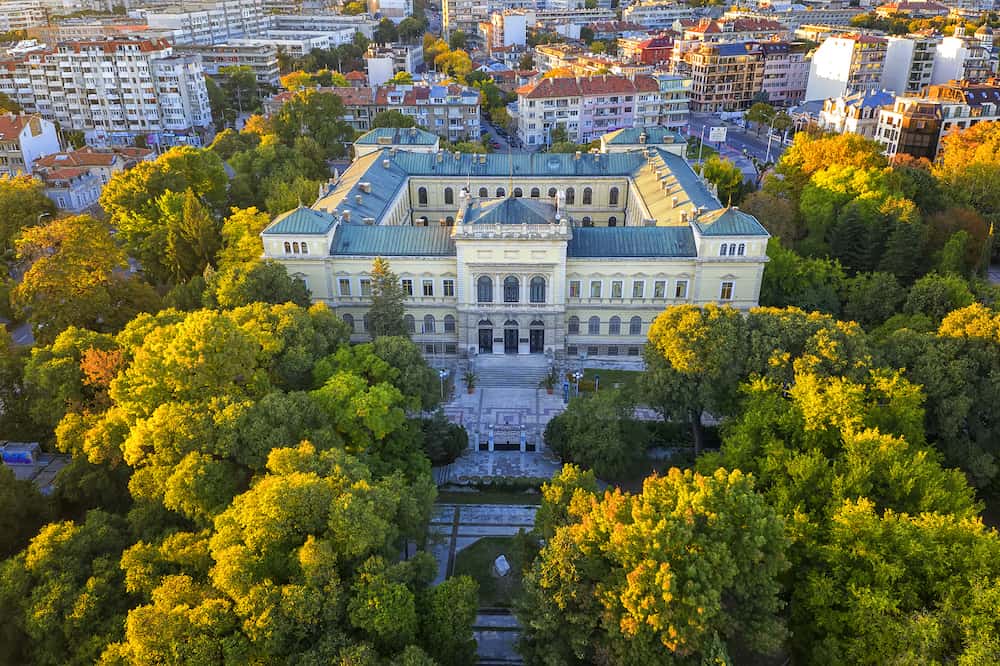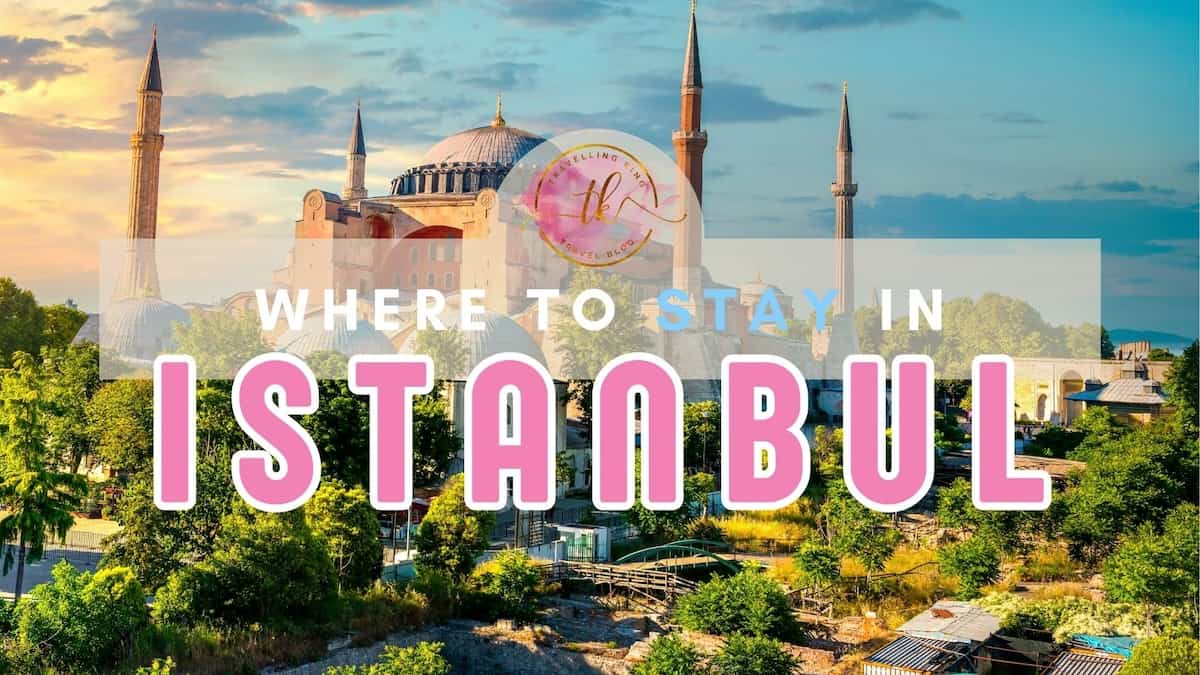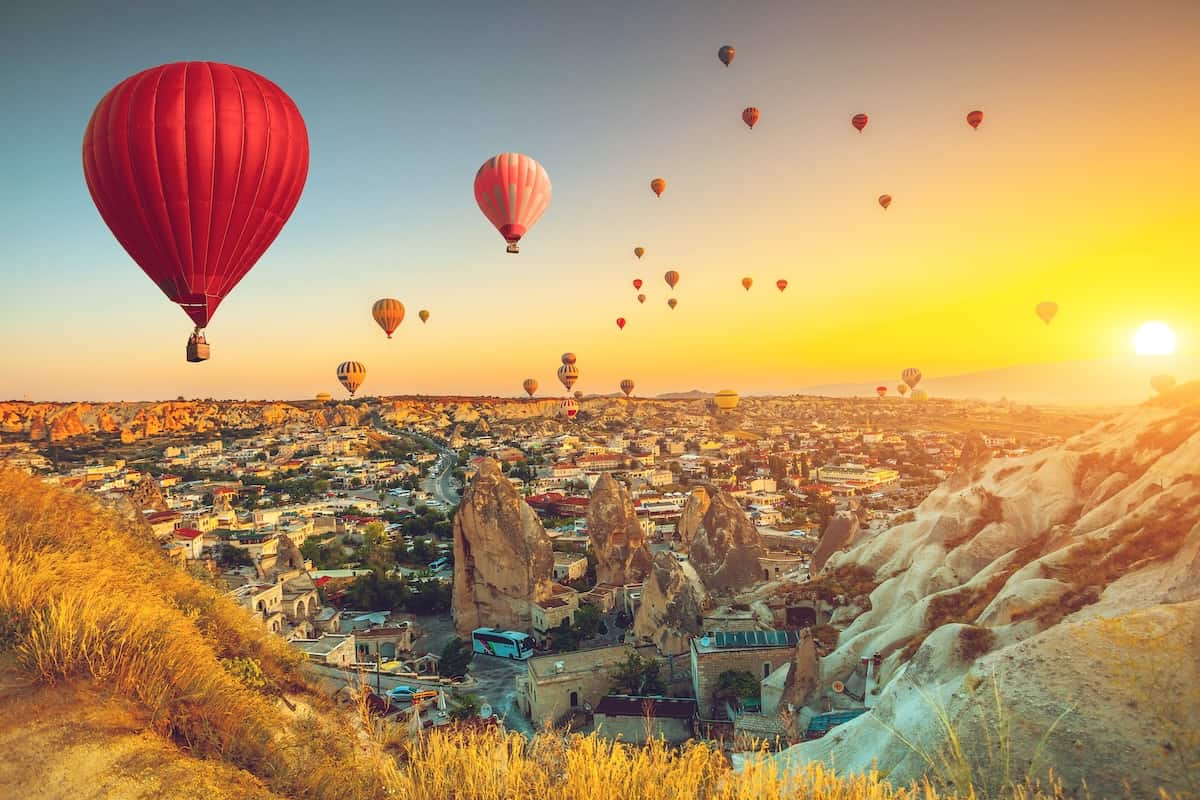25 Things to do in Istanbul – That People Actually Do!
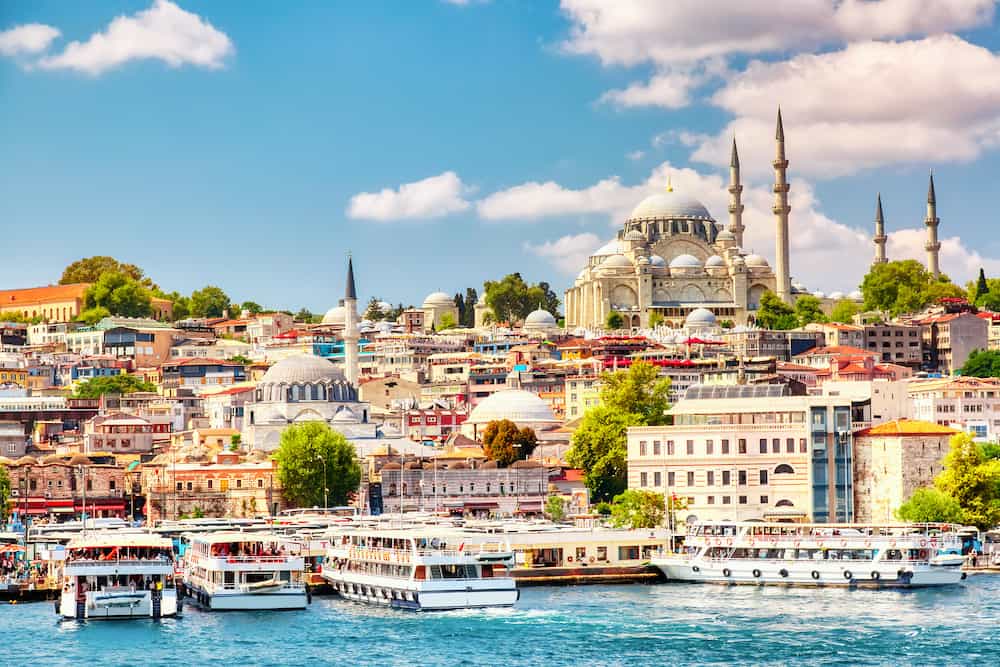
Istanbul is one of those places that every serious traveller must visit at least once in their lifetime. This city of over 15 million people is transcontinental, with European and Asian sides divided by the Bosphorus strait.
Throughout the centuries, Istanbul has undergone a few name changes (from Byzantium to Constantinople) and, for a long time, was considered the centre of the world.
As a result, the city has an abundance of extraordinary architecture, countless historic museums, a rich coffee and tea culture, and the best breakfast you’ll ever have.
Despite not being the official capital city, Istanbul is the most-visited place in the country and one of the most popular destinations in Europe. The welcoming Turkish hospitality is one of the many reasons travellers keep coming back.
There are so many things to do in Istanbul, Turkey that it is impossible to list them all, let alone see them all! However, there are definitely some attractions you simply can’t miss. Here are 25 suggestions for what you should do and see while in Istanbul.
Plan your trip
Save on fees abroad with the Wise Card—use it at ATMs, restaurants, and for flights or hotels in over 150 countries. Manage 40+ currencies in real-time with the Wise app.
Need Help Planning?
- Cheap Flights: Find the best deals.
- Accommodation: From hostels to luxury stays.
- Car Rental: Affordable options worldwide.
- Sightseeing Tours: Explore without breaking the bank.
- Travel Adapter: One adapter for all your needs.
- Travel Insurance: Don’t risk it—stay covered.
This post includes affiliate links. Read my full disclosure and content policy.
Hagia Sophia
Number one on every list of places to visit in Istanbul is the Hagia Sophia (Ayasofya), and for good reason. This mesmerizing masterpiece was constructed in 537 AD as a Byzantine Christian (then Greek Orthodox) cathedral before being taken over by the Ottomans and becoming an imperial mosque in 1453.
Islamic features including the four minarets were added, while the altar, bells, and figures depicting Christianity were removed.
In the 1930s during Turkey’s modern, secular revolution under Ataturk, the Hagia Sophia was turned into a museum. Many of the Christian mosaics from the Byzantine era were uncovered and restored as well. In the past few years, however, Muslim prayers (including call to prayer) have commenced again.
The Hagia Sophia was built on top of a hill overlooking the Bosphorus, certifying itself as an iconic and everlasting symbol of the city. Inside, you’ll be amazed by the intricate and eclectic frescoes covering the high domes and the enormous marble pillars.
The combination of contrasting elements coming from different religions, as well as the merging of Eastern and Western cultures, is one of the most fascinating aspects.
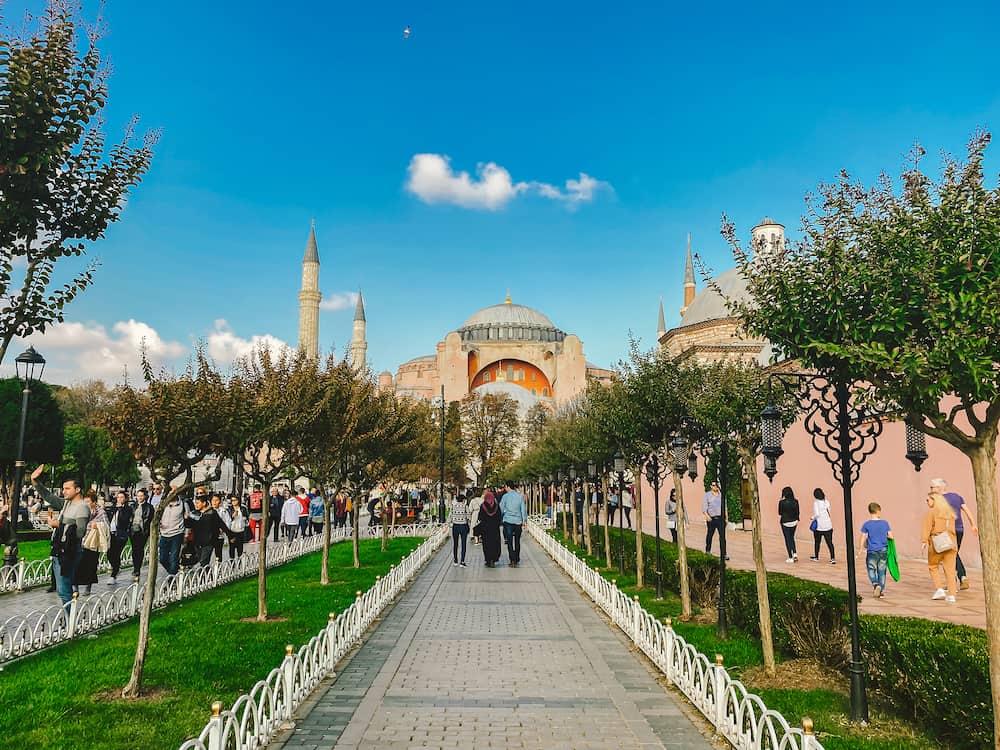
The Blue Mosque
Opposite the Hagia Sophia is the Sultan Ahmet Mosque, most commonly referred to as the Blue Mosque. This nickname comes from the number of blue tiles adorning the interior walls. In fact, there are over 20,000 handmade ceramic tiles in total inside.
Built in the early 17th century, this five-dome, six-minaret mosque is another major architectural masterpiece. The design elegantly blends both Byzantine and Islamic elements.
The domes are so heavenly you won’t be able to look down, and the 200 or so stained glass windows provide a wealth of natural light. The spacious courtyard is paved in marble and surrounded by a portico.
Call to prayer is conducted five times per day, during which tourists have to wait outside. Look up the exact times online for the day you’ll be visiting so that you can avoid this.
Also, remember to wear appropriate clothing that covers your shoulders and knees, and don’t be surprised when you’re asked to take your shoes off. Before entering, women can borrow a scarf to cover their hair for free.
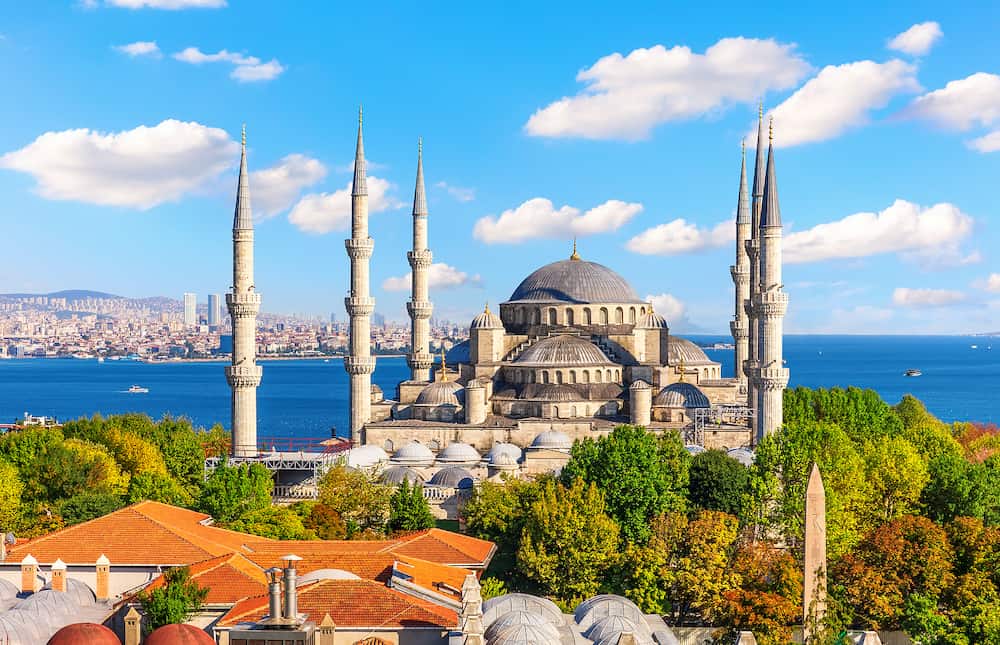
Sultanahmet Square
Between the Hagia Sophia and the Blue Mosque is Sultanahmet Square, the oldest part of the city. This square was once the Hippodrome of Constantinople during the Byzantine Empire.
A few structures from this era remain, such as the Obelisk of Theodosius from the fourth century, the Walled Obelisk, and the 2,500-year-old Serpent Column.
If you have a strong interest in ancient history, you will likely cherish the opportunity to walk through this historic area.
Grand Bazaar
The Grand Bazaar (Kapalıçarşı) is one of the biggest and most iconic markets in the world. Dating back to 1455, it’s also one of the oldest existing markets and is regarded as the first-ever shopping mall. No visit to Istanbul is complete without checking this place out!
The closed market is made up of 61 streets with over 4,000 shopfronts across 30,000 square metres. This can be a little overwhelming to first-time visitors not expecting such an enormous bazaar, but you quickly learn to embrace the bustling atmosphere and accept that you won’t be able to see it all in one day.
The bazaar sells everything from high-quality Kilim rugs, colourful lanterns and genuine leather items to eclectic ceramics, evil eye ornaments, and silver and gold jewellery. Of course, you can also buy sweets like Turkish delight (lokum) in bulk.
You’ll find similar businesses grouped together. For example, carpets and rugs can be found along Sahaflar Caddesi, while jewellery and gold bracelets are mostly around Kalpakcılar Caddesi.
If you’re looking to make a significant purchase, salespeople will often prepare a cup of tea for you while you negotiate the price. Bargaining is a way of life here, so don’t be shy!
Never reveal your ideal price first, and don’t fall for any of the classic sympathy tricks used to gain extra commission. Although it always varies depending on the shop or the item, you should be able to knock at least 35% or more off the original asking price.
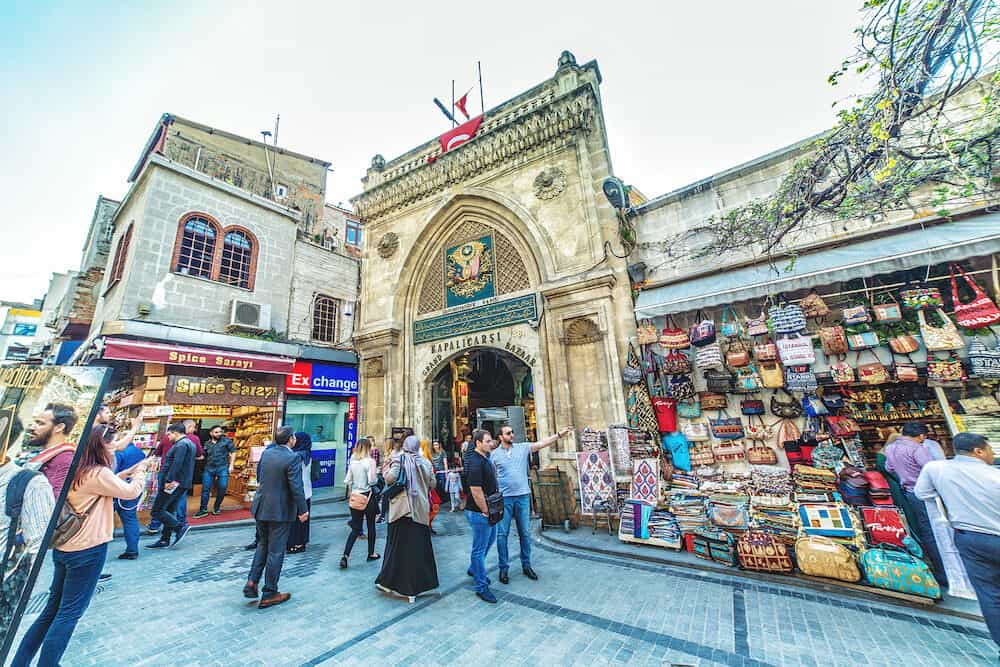
Topkapı Palace
The fairytale-like Topkapı Palace is an enormous museum showcasing collections of holy artefacts, clothing, weaponry, porcelain, and gold, silver, emerald and diamond jewellery.
During the 15th and 16th centuries, the palace was the primary residence of the Ottoman sultans. You’ll get to learn about many facets of Turkish and Ottoman history here, so you should dedicate at least a few hours to exploring the museum.
The complex contains four courtyards with several smaller buildings, a harem, a palace school, and a series of kitchens large enough to prepare food for 4,000 people.
The harem requires an extra ticket, but it’s absolutely worth it. A private, guided tour is recommended as well to hear about some of the scandalous stories.
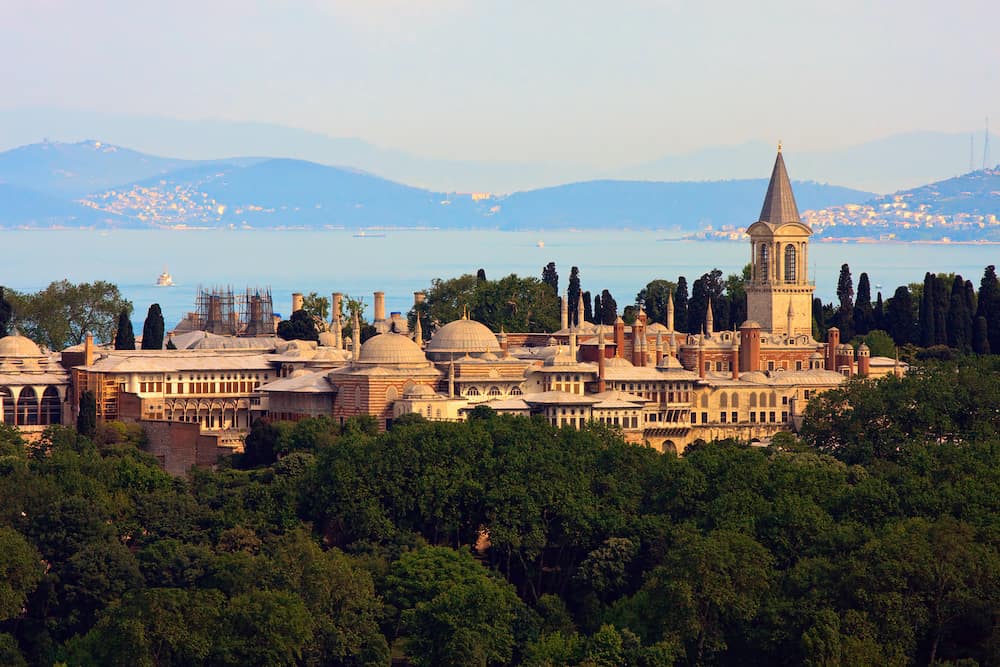
Galata Tower
One of the top Istanbul sightseeing attractions is the Galata Tower. This medieval stone tower was built in 1348, replacing an earlier wooden tower.
At a height of almost 67 metres, it peers over the city and dominates the skyline. Tourists line up to climb this tower and reach the observation deck, which offers breathtaking 360-degree views across the Golden Horn inlet of the Bosphorus and both sides of Istanbul.
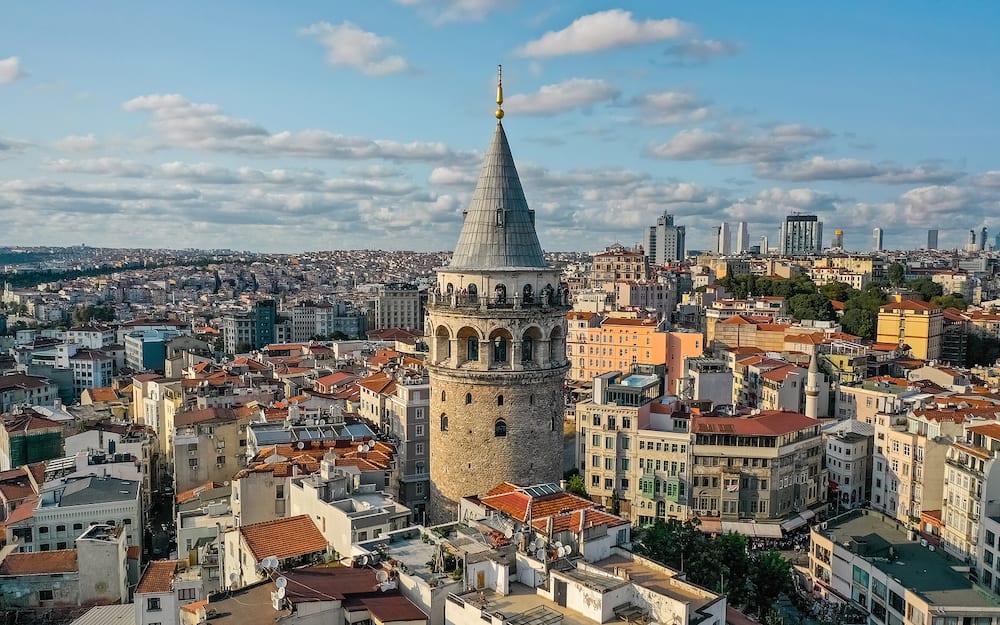
Basilica Cistern
One of the spookiest Istanbul attractions is the Basilica Cistern. This 9,800-square-metre cistern is the largest of the hundreds of ancient cisterns below the city.
Although it has the capacity to hold 80,000 cubic metres of water, it is kept relatively dry today to allow the public to visit inside.
The ceiling is nine metres tall and supported by 336 marble columns. In the northwest corner of the cistern, two of the columns feature carved blocks of Medusa at the base.
The engraved Hen’s Eye column is another highlight. VIP tours are available if you want to skip the line and hear commentary from an informative guide.
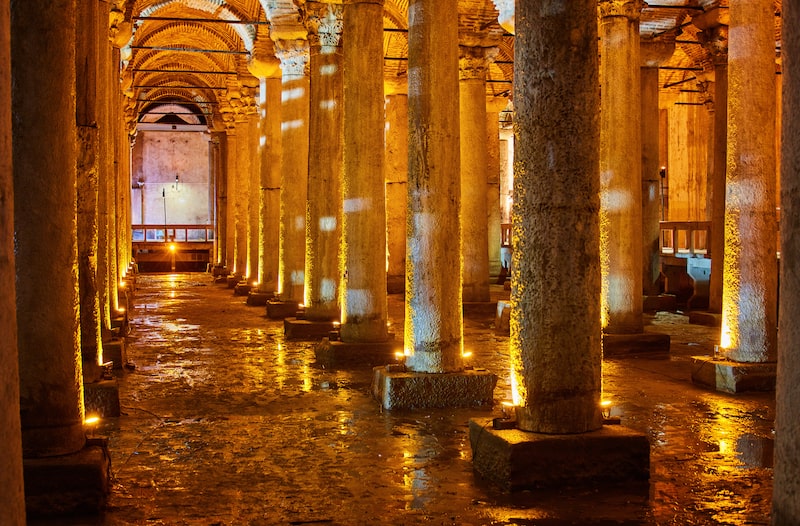
Taksim Square
Taksim Square is a famous shopping and dining area at the end of Istiklal Street. There are countless hotels, pubs and restaurants around the area, making it a popular place for both tourists and locals to be in the evenings.
If you’re not sure what to do at night, you’ll have plenty of options around Taksim.
Across from the square is Taksim Gezi Park, one of the few green spaces in the centre of the city. In 2013, residents staged a sit-in to protect the park from urban development plans, which began a movement of nationwide protests.
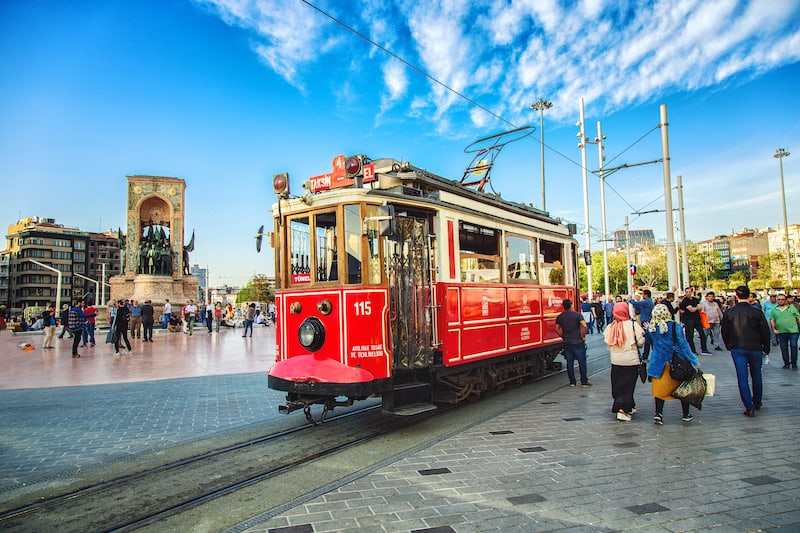
Süleymaniye Mosque
Another incredible mosque worth visiting is the Süleymaniye Mosque, built for Süleyman the Magnificent. Constructed on top of the Third Hill in the 1550s, the impressive structure can be seen from the Golden Horn.
The mosque was designed by Mimar Sinan, the most renowned and respected Ottoman architect, and is considered his greatest achievement. Across the street to the north of the mosque is Sinan’s tomb, which he also designed.
The exterior is notable for its minarets, two reaching 76 metres tall and another two at 56 metres. At the time, only sultans were permitted to use four minarets when constructing a mosque.
The main dome is 53 metres high with a diameter of 26.5 metres, surrounded by an array of smaller domes. These domes are enchanting from the inside, and it’s worth visiting the mosque just to admire them.
Süleymaniye Mosque is far more than a place to worship, also containing an exceptional courtyard, hamams, four Quran schools, a hospital, a roadside inn for travellers (called a caravanserai), and a public kitchen, which is now a restaurant.
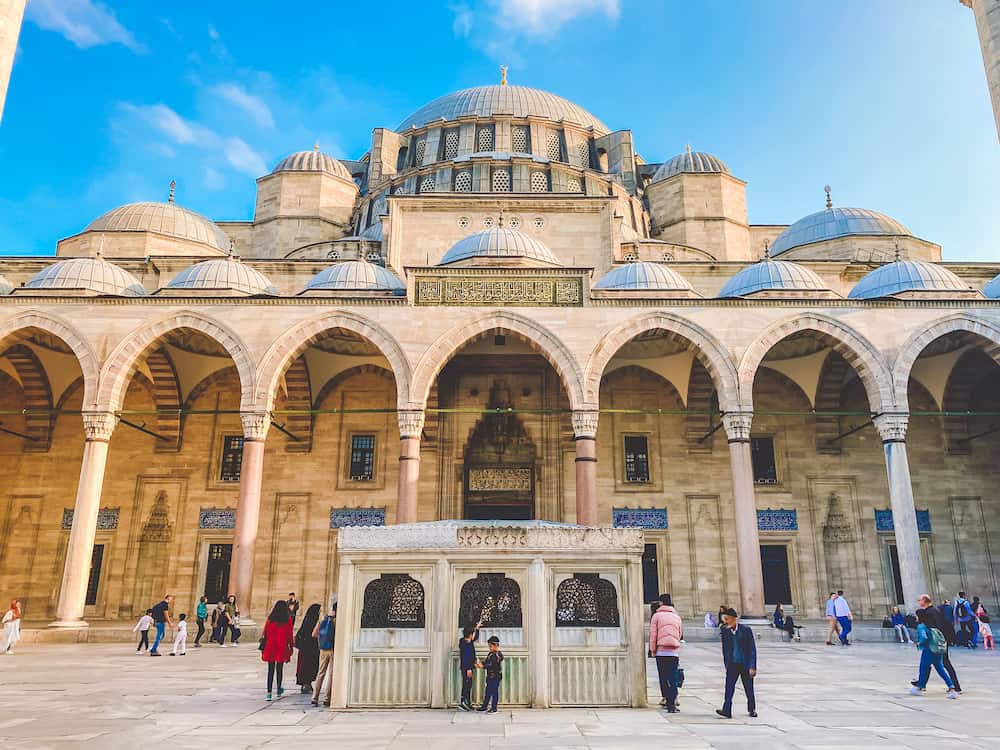
Chora Museum
Inside a former Byzantine Greek Orthodox church is the Chora Museum (also called the Chora Church or the Kariye Museum). Similar to the Hagia Sophia, the church was turned into a mosque during the Ottoman Empire and later became a secularised museum.
The interior Byzantine frescoes and mosaics are impressively elaborate and well-preserved, having only been rediscovered and restored in the 1940s.
The church has been slowly undergoing renovations for a while now, so you might like to check in advance which areas are open while you’re in Istanbul.
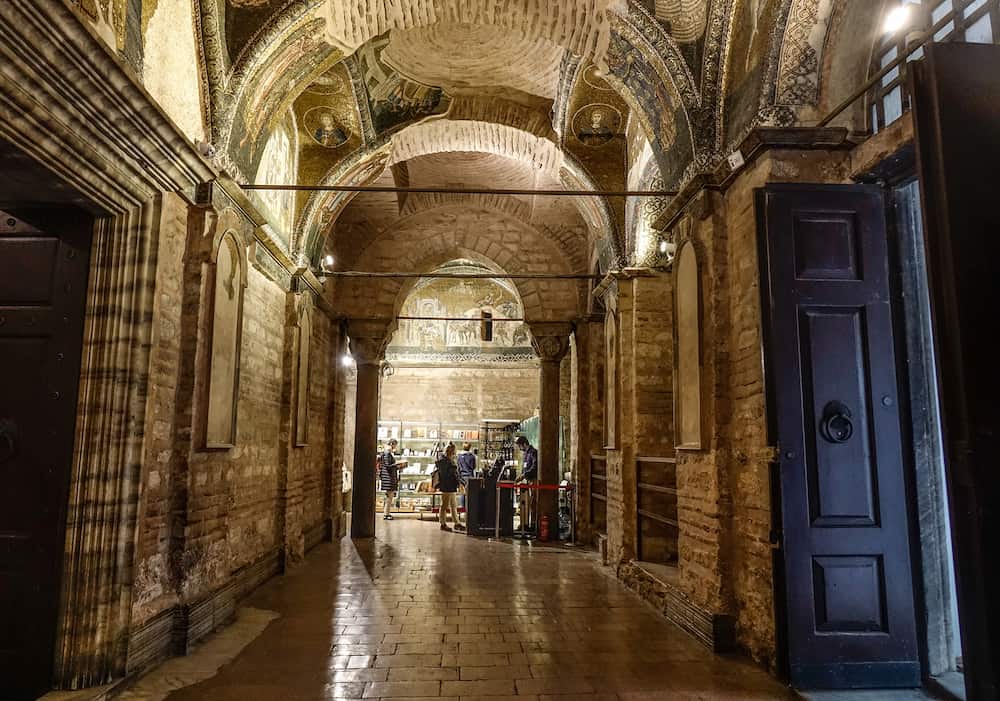
Bosphorus Cruise
A cruise along the Golden Horn of the Bosphorus strait is a must when visiting Istanbul. This body of water has played a significant and strategic role throughout the city’s history, both geo-politically and economically.
In terms of purely sightseeing, there are over 620 waterfront buildings along both shorelines dating back to the Ottoman Empire.
At the southern entrance of the strait is the Maiden’s Tower, built on top of a small inlet. Although the first Byzantine watchtower dates back to 1110, the current structure was built in 1725 after the original was severely damaged.
Public ferries and sea buses operate frequently as a way for commuters get between European and Asian sides of the city. Tourist cruises last anywhere from two to 10 hours and include commentary of all the incredible sights you pass.
Depending on the day, shorter tours may stop at Küçüksu Palace or the Rumelihisarı Fortress, and the longer tours include a delicious lunch with a traditional Turkish meze.
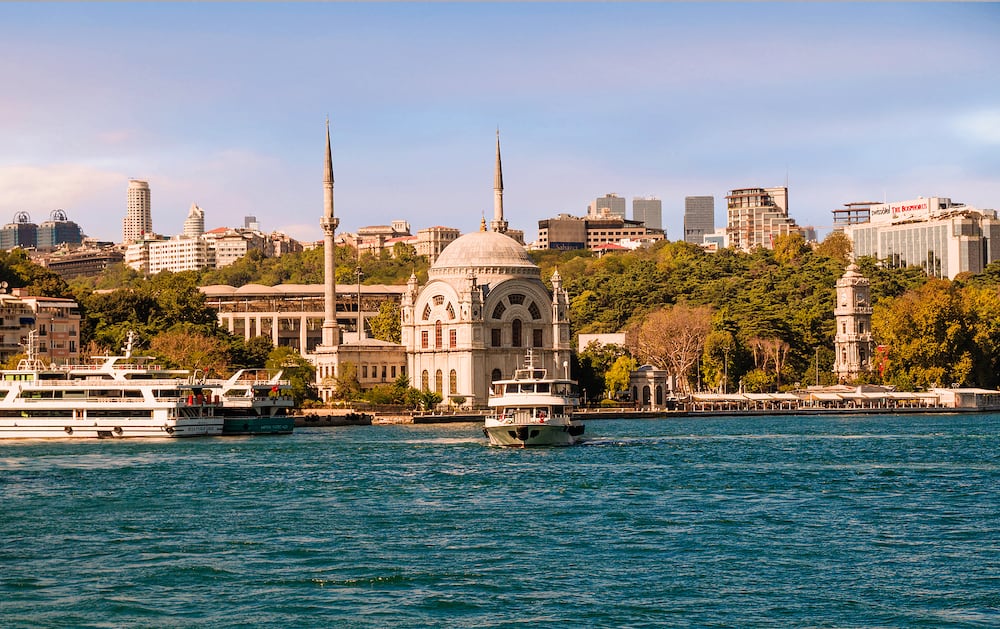
The Istanbul Archaeology Museums
A visit to the Istanbul Archaeology Museums is one of the best things to do alone in Istanbul, because you can focus on the areas that interest you the most and explore at your own pace.
These museums near Gülhane Park are a group of three: the Archaeology Museum, the Museum of the Ancient Orient, and the Museum of Islamic Art.
Together, there are over a million objects on display from the Ottoman, Hellenic and Roman periods.
Some of the most outstanding pieces include the fourth-century Alexander Sarcophagus, glazed panels from the Ishtar Gate of Babylon, the snake’s head from the Serpentine Column, statues from the Temple of Zeus, and the Lycian sarcophagus of Sidon.
It’s easily one of the most impressive and immaculate archaeological museums, so spare a few hours here and head back in time.
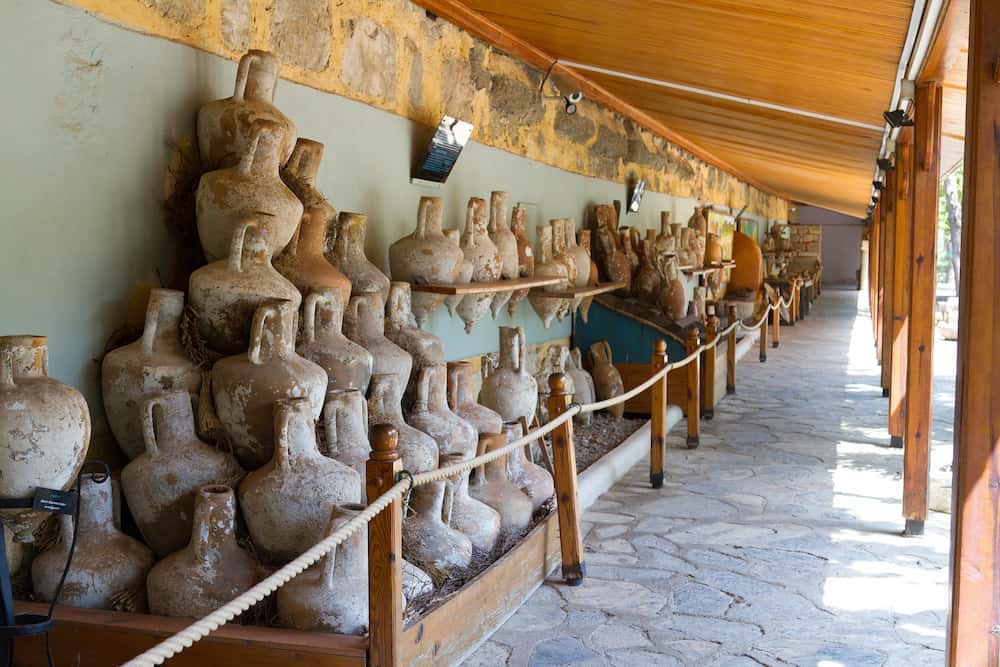
Dolmabahçe Palace
The magnificent Dolmabahçe Palace is the most elegant site along the European side of the Bosphorus strait. It is the largest palace in Turkey, with 285 rooms, 46 halls and six hamams across an area of 45,000 square metres.
The architecture is an eclectic blend of traditional Ottoman, Baroque, Rococo and Neoclassical elements, creating a uniquely glamorous design. Built in the mid-1800s, it once served as an administrative centre for the Ottomans.
The palace is quite special to Turks, as Mustafa Kemal Atatürk, the founder of modern Turkey, spent the final days of his life here. Take a guided tour around and marvel at the opulence of the rooms and harems.
The Gate of the Sultan, the Gate of the Treasury and the Gate to the Bosphorus are all worth seeing up close, as are the Dolmabahçe Mosque and the Clock Tower nearby.
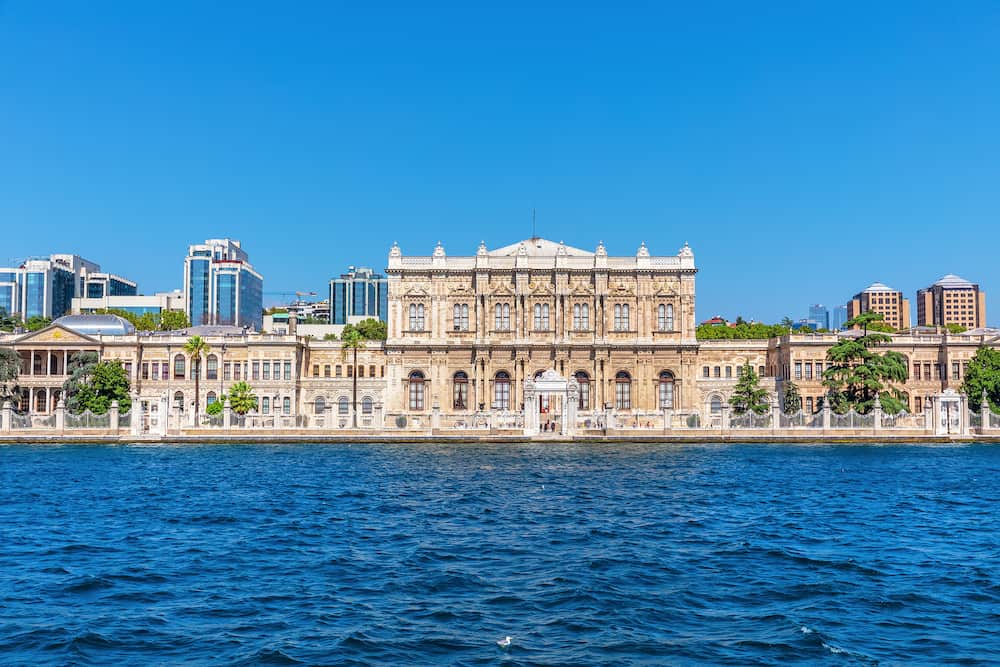
Istanbul Coffee Tour and Turkish Coffee-Making Class
Coffee (or kahve) is an essential part of Turkish culture, and there’s a very distinct way to prepare it. If you’re addicted to caffeine, a Turkish coffee tour of Istanbul is a must.
Learn about Ottoman coffee production and storage methods while sipping a few cups at some local cafes.
You’ll also get to see how Turkish coffee is made during a 30-minute coffee-making workshop. Afterwards, you’ll receive a certificate as a memento.
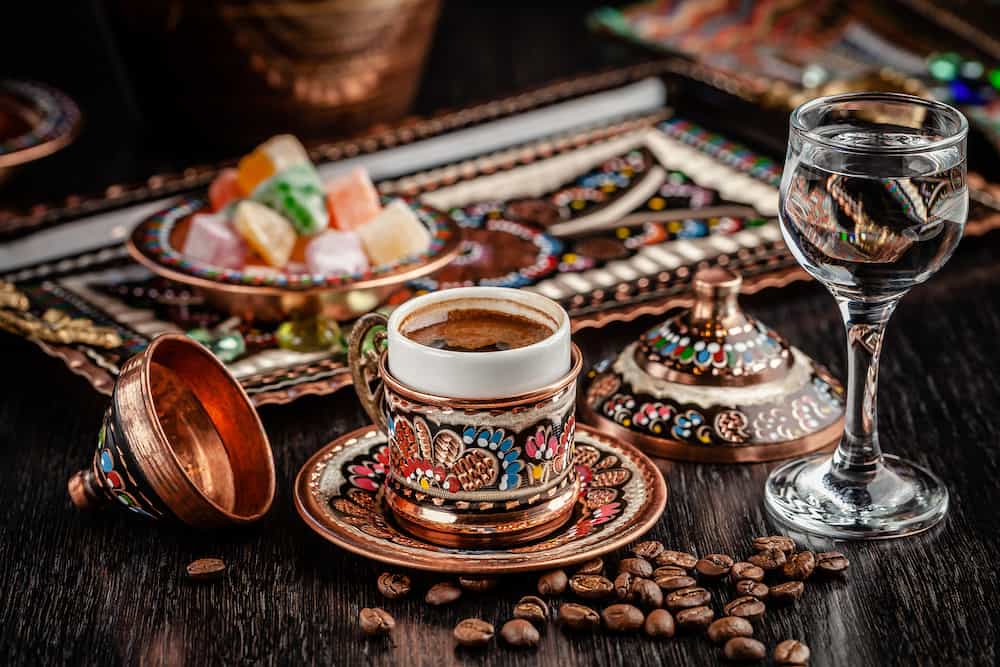
Istiklal Street
One of the best-known pedestrian avenues in Istanbul is Istiklal Street (İstiklal Caddesi in Turkish) in the Beyoğlu neighbourhood.
It stretches for 1.4 kilometres from the Şişhane Metro Station to Taksim Square and is always buzzing with shoppers. If you need to pick up something from a familiar store, there are plenty of international retailers here.
The bright-red tram is the only vehicle allowed, since its slow pace makes it more of a nostalgic tourist attraction than a mode of getting from A to B.
The buildings along both sides of the street are an eclectic mix of late Ottoman-era structures in Neo-Classical and Neo-Gothic styles, as well as a few Art Deco gems too.
Although most Turks don’t celebrate Christmas, the avenue is festively decorated during December in preparation for the New Year celebrations. On snowy days and evenings, it’s a magical winter wonderland.
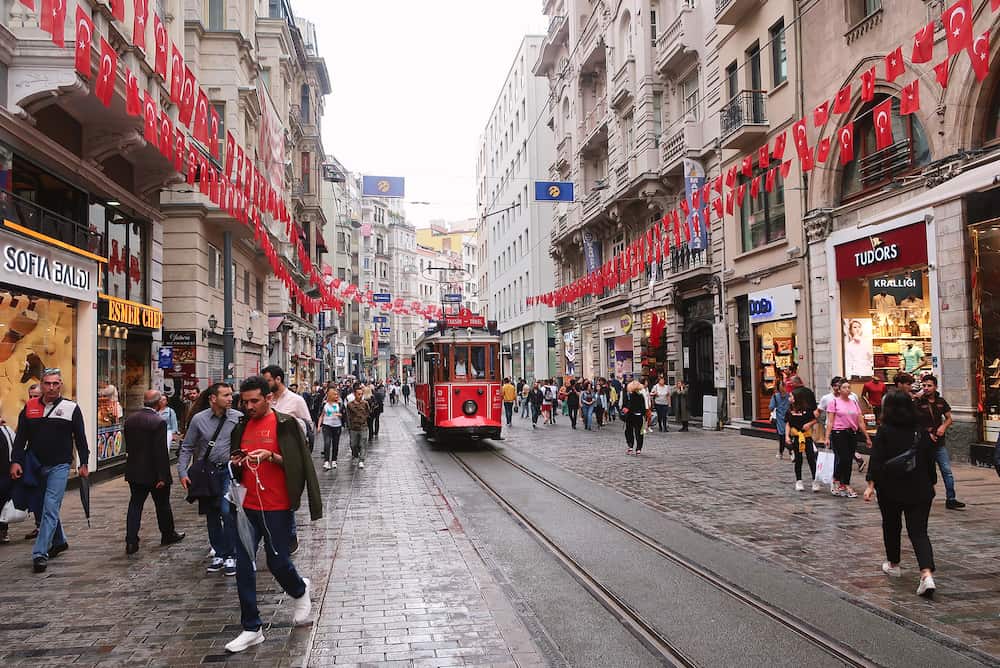
Cağaloğlu Hamam
Of course, you can’t visit Istanbul without indulging in a classic Turkish bath called a hamam. One of the most authentic (and incredibly stunning) hamams in the city is the Cağaloğlu Hamam.
Built in 1741, it was the last traditional hamam constructed before the fall of the Ottoman Empire. In the main area, rays of sunshine beam through tiny windows in the high domed ceiling and create an even more magical experience.
A great thing about the Cağaoğlu Hamam is the wide range of services available to suit all budgets. So, if you’re watching your money, you can still come by and select the self-service, do-it-yourself bath and shampoo, or a simple scrub, steam and massage.
For those looking to truly indulge, there’s the aromatherapy Ottoman luxury service, the Sultan Mahmud the First service with a foot massage and collagen face-mask included, and even a special service for brides-to-be.
To complete each ritual, you’ll receive complimentary Turkish tea, Turkish delight and homemade sherbet.

Turkish Street Food Tour
Istanbul is known for its mouthwatering food, particularly the never-ending meze breakfast. A four-and-a-half-hour street food tour is a perfect introduction to Turkish cuisine if you want to keep moving.
Not only will you discover a variety of new foods, but you’ll be taken to places like the bustling Kadikoy Market on the Asian side of the city.
Sample fresh dates and olives, dig into a fish sandwich by the Galata Bridge, indulge in some baklava in a local pastry shop, and pick up a simit, Turkey’s answer to the morning bagel. This really is an unbeatable experience that will give you a strong appreciation for Turkish culture.
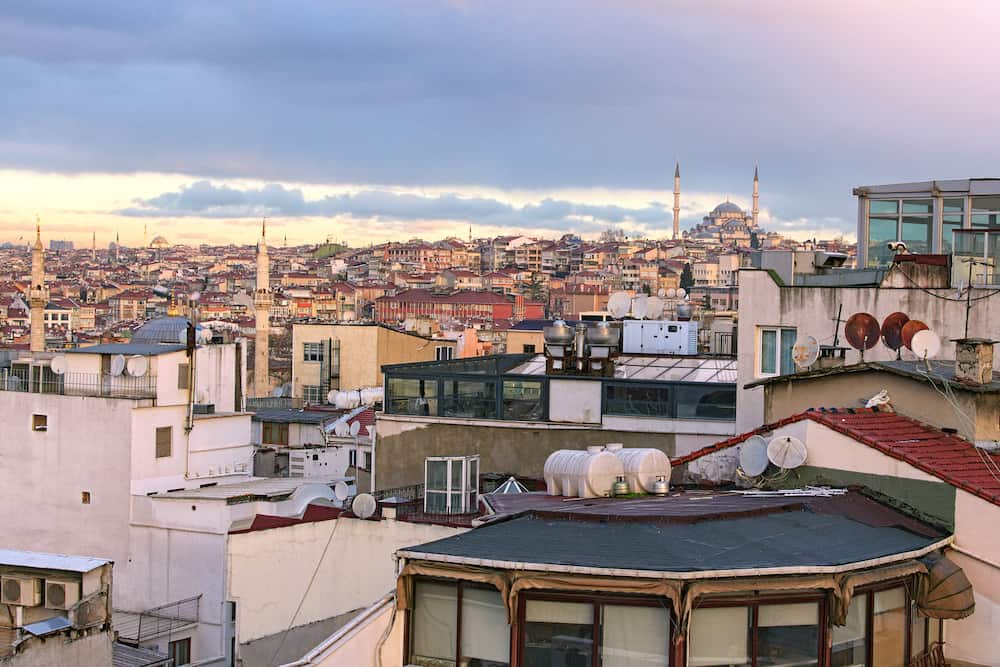
Rumelihisarı
If you have more than a few days in Istanbul, Rumelihisarı near the Fatih Sultan Mehmet Bridge is a superb attraction to visit.
While it’s away from most other attractions in the city, some cruises along the Bosphorus stop here, as mentioned earlier. Also known as the Rumeli or Boğazkesen Castle, this former medieval fortress was built atop a series of hills in the 1450s in preparation for an Ottoman siege.
Today, it’s a charming open-air space as well as a venue for concerts, festivals and special events during the summer.
Unlike more central attractions, it’s never too busy here. If you’re in need of a peaceful break away from the noisy city, come here to walk around and explore the ruins overlooking the water.
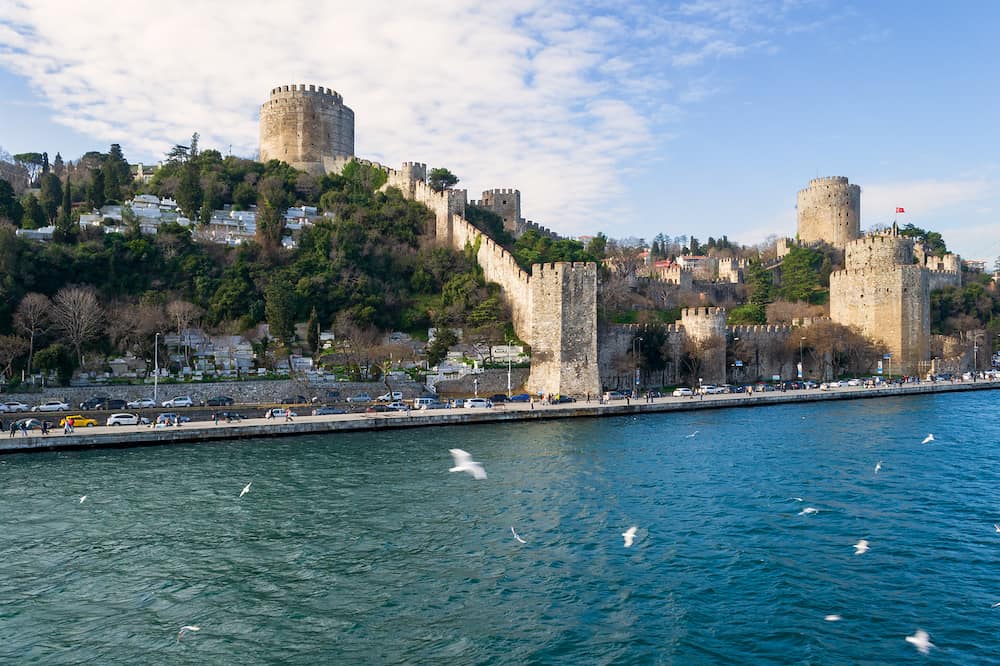
The Whirling Dervishes at the Hodjapasha
The whirling dervishes originated in the Konya Province of Turkey in the early 1300s. Belonging to the Mevlevi Order, which is defined as Islamic mysticism, they are infamous for their whirling ceremony called a sema.
Be captivated by this hour-long choreographed spiritual dance performed to traditional music at the Hodjapasha Dance Theatre.
Book your tickets in advance to skip the line and head straight to the bar, where you can relax with a drink and some Turkish delight before the show begins.
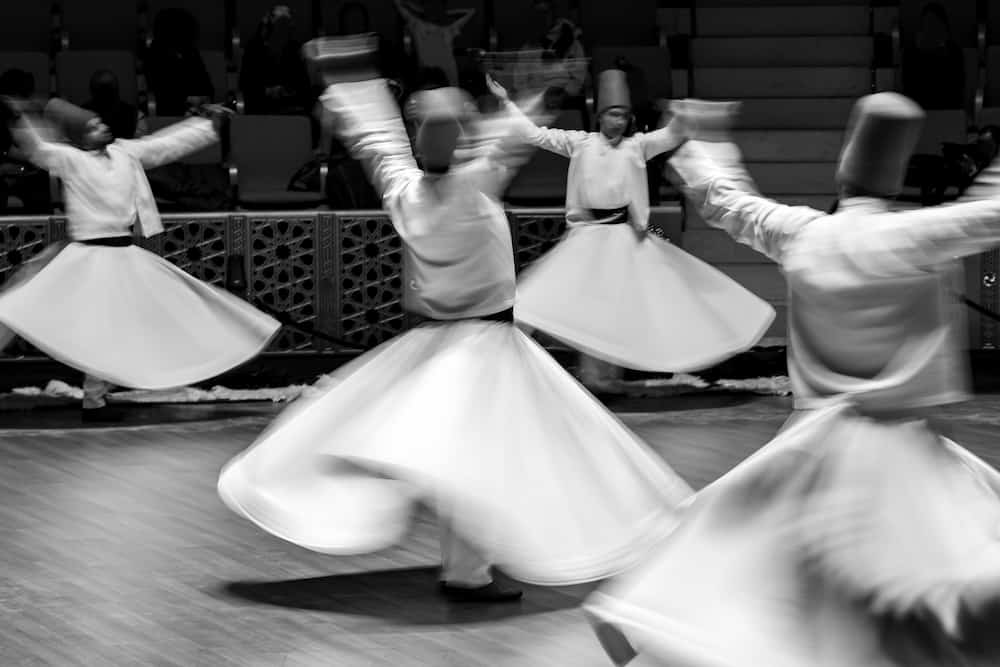
Cat-Seeing
Istanbul is home to more than 100,000 street cats. They are looked after by all the local residents and are considered holy by those of Muslim faith.
During cold weather, a few mosques in the city are known to open their doors to cats and offer a warm place to sleep. In fact, they are so beloved here that a statue was installed commemorating Tombili, an internet-famous cat who suddenly passed away in 2016.
Other cats become local celebrities too, like the one known for hanging out at the Taksim Metro Station.
Although you definitely won’t need to go out of your way to spot any of these friendly felines, be sure to stop and say hello.
If you pay close attention to your surroundings, you’ll see a cat perched high above on a rooftop or taking a snooze in the corner of a shop.
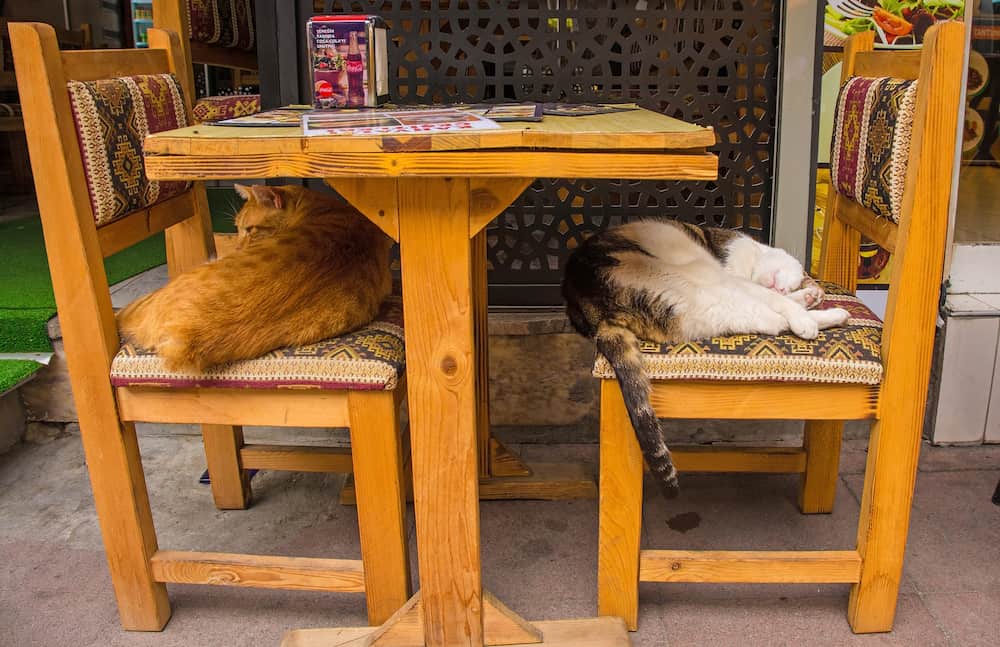
Ortaköy Mosque
Next to the Bosphorus Bridge sits the Ortaköy Mosque (officially called the Büyük Mecidiye Camii). This modest yet opulent Neo-Baroque gem was built in the 1850s.
It features a single dome and two slim minarets made from concrete and stone. With no set entrance cost, admission is based on donation.
The interiors of the mosque are unlike any other, with natural sunlight generously streaming through the high windows.
The dome-shaped ceiling is adorned with pink mosaics, and the walls include numerous panels of Islamic calligraphy. The many crystal and gold chandeliers add even more opulence.
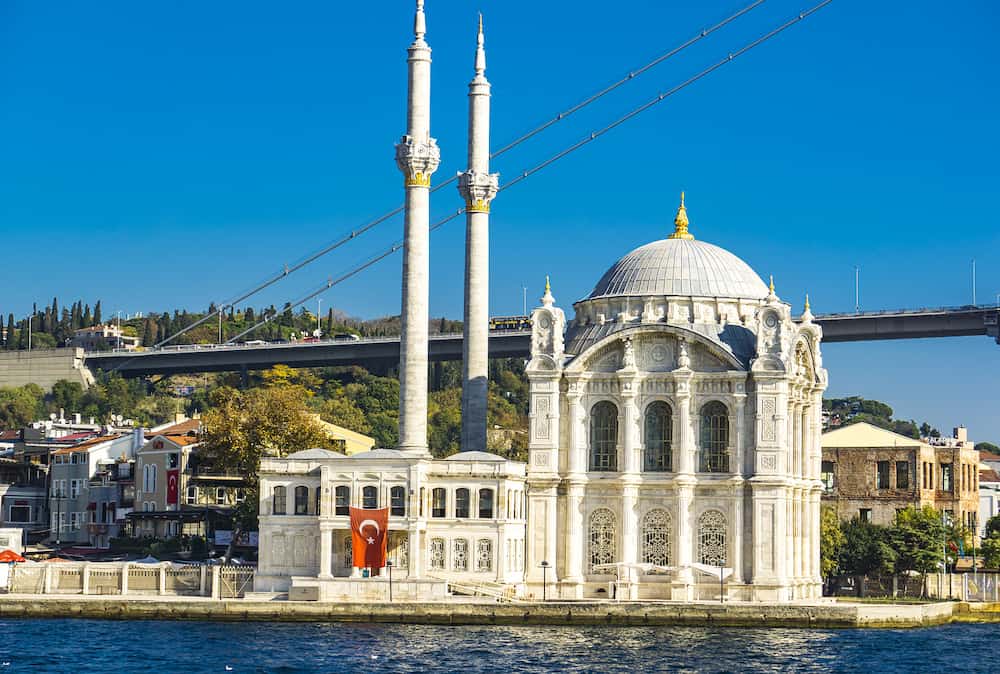
Çiçek Pasajı
Çiçek Pasajı, which translates to Flower Passage, is a historic passageway between Istiklal Street and Sahne Street. By the 1940s, the area consisted primarily of flower shops, hence the name.
Following restoration in 1988, the passage reopened as a covered arcade full of restaurants, cafes and pubs.
The buzzing atmosphere, gorgeous architecture and outstanding food justify the higher prices you can expect to pay here. Be sure to come by at least once for dinner and a drink.
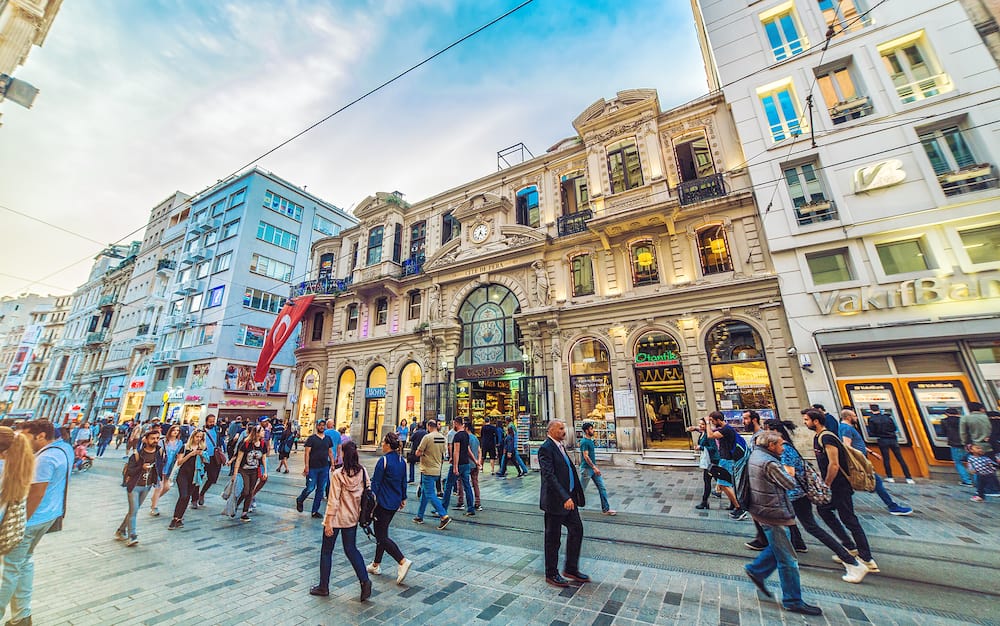
Istanbul Museum of Modern Art
With such a rich and extensive history, you can easily get stuck in the past in this city. Yet, the Istanbul Museum of Modern Art shows that contemporary artwork can be just as impressive. Established in 2004, it is the first modern art museum in Turkey.
The fascinating exhibition titled ‘In Pursuit of the Present’ explores the relationships between humans and their environment. You can also pop into the Istanbul Modern Cinema on Thursdays, Saturdays or Sundays and check out the monthly film program.
The entire collection can be seen in about an hour, so it’s perfect if you have some extra time to spare. Keep in mind that the museum is currently temporarily located in Beyoğlu until its new Karaköy building is completed.
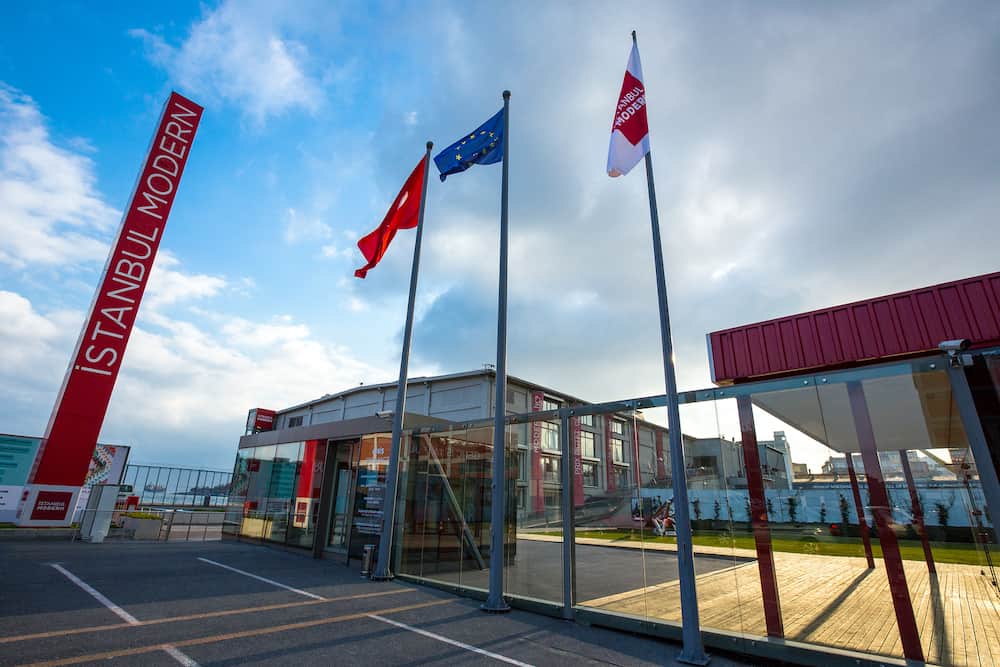
Beylerbeyi Palace
Along the Asian shore of the Bosphorus is the luxurious Beylerbeyi Palace. Once used as a summer residence for the Ottoman sultans, the rectangular palace has 24 rooms and six halls across two floors.
You’ll notice the design is perfectly symmetrical, even down to the placement of the furniture. Each room is elaborately decorated, reflecting the high standard of living enjoyed by the sultans and their guests.
An informative audio guide is included and provides some interesting facts about each area of the palace. After the tour is complete, sit back with a cup of tea at the relaxing garden cafe.
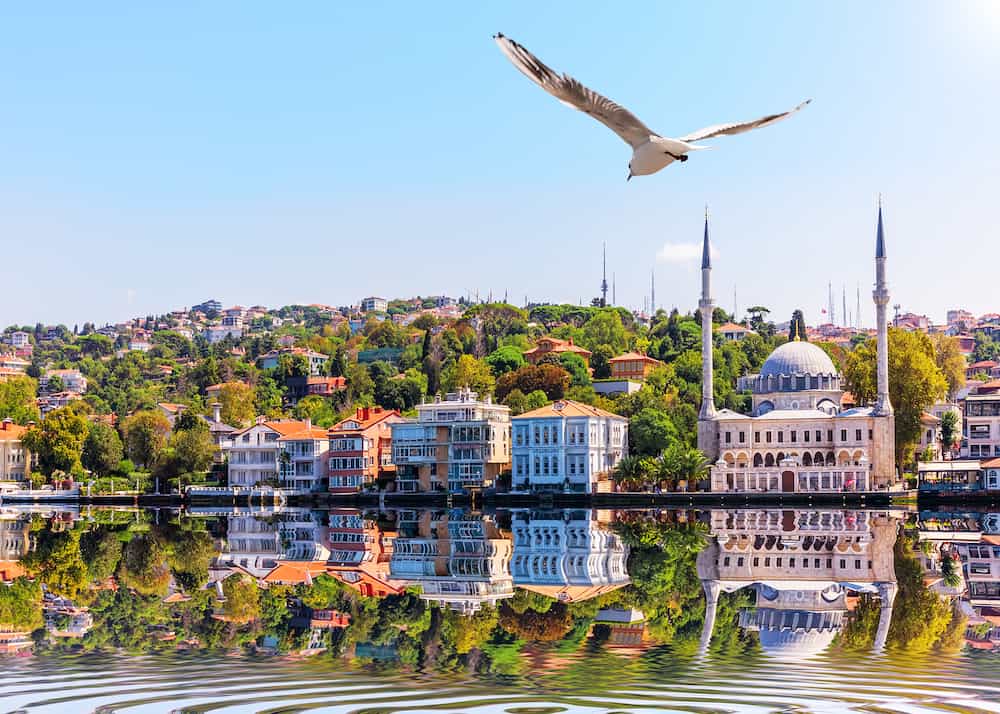
Miniaturk
In such a huge city like Istanbul, there will definitely be some attractions that you just won’t have the time to visit. Fortunately, you can compromise by seeing some of them in miniature all at once! Miniaturk is a 60,000-square-metre park containing 122 miniature models of famous structures.
Even if you’ve just been to the Hagia Sophia or the Süleymaniye Mosque, it’s cool to see them again at one-25th of their original size. The Haydarpaşa Train Station, the Eyüp Sultan Mosque and St Antoine’s Church are a few excellent models that you might not get to see for real.
Landmarks from all around the country are included as well, such as the Pamukkale thermal pools, the fairy chimneys of Cappadocia, and the stone houses of Mardin. There’s an app available to download if you’d like to learn more with an audio guide.
A visit to Miniaturk is one of the most engaging things to do in Istanbul with kids. In addition to the models, there’s a children’s playground, a labyrinth area, a mini stadium, and remote-controlled boats for the little ones to play with. If the kids are becoming restless after numerous mosque or museum visits, Miniaturk is the place to go.
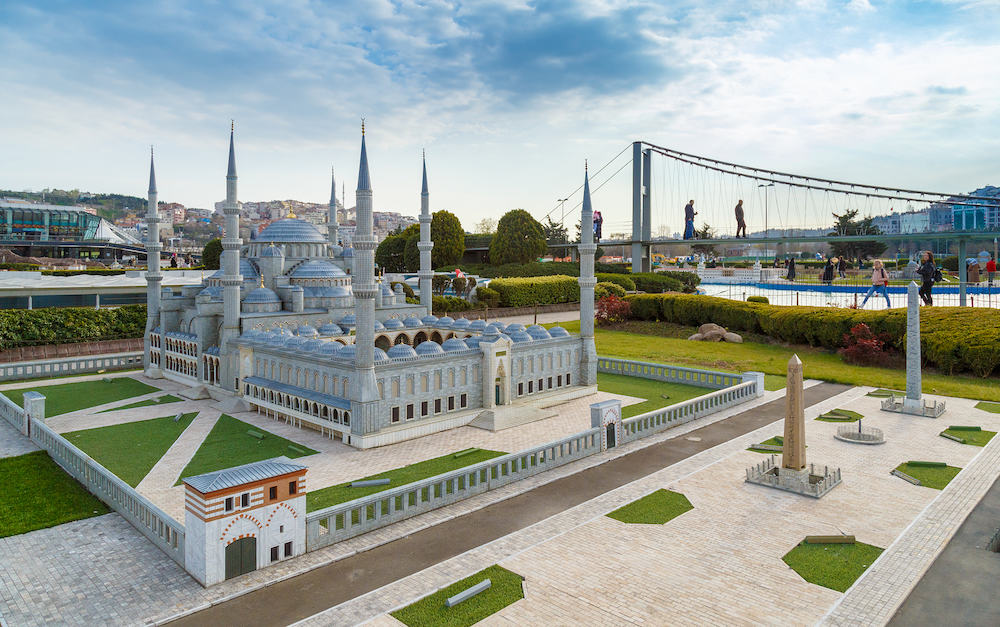
Recommended tours in Istanbul
- Best of Istanbul: 1, 2 or 3-Day Private Guided Istanbul Tour
- Taste of Two Continents Food Tour
- Bosphorus Sunset Cruise on Luxury Yacht
- Party Pub Crawl – International Party Tour
- Bosphorus Yacht Cruise with Stopover on the Asian Side – (Morning or Afternoon)
- Skip The Line: ISTANBUL PRIVATE TOUR FROM CRUISE SHIP/HOTEL
- Historical Peninsula
- All in One Day Istanbul – Historical Tour of Istanbul with Bosphorus Cruise
- Istanbul Airport Private Departure Transfer
If you’d like to save it for later, please save it to Pinterest.
